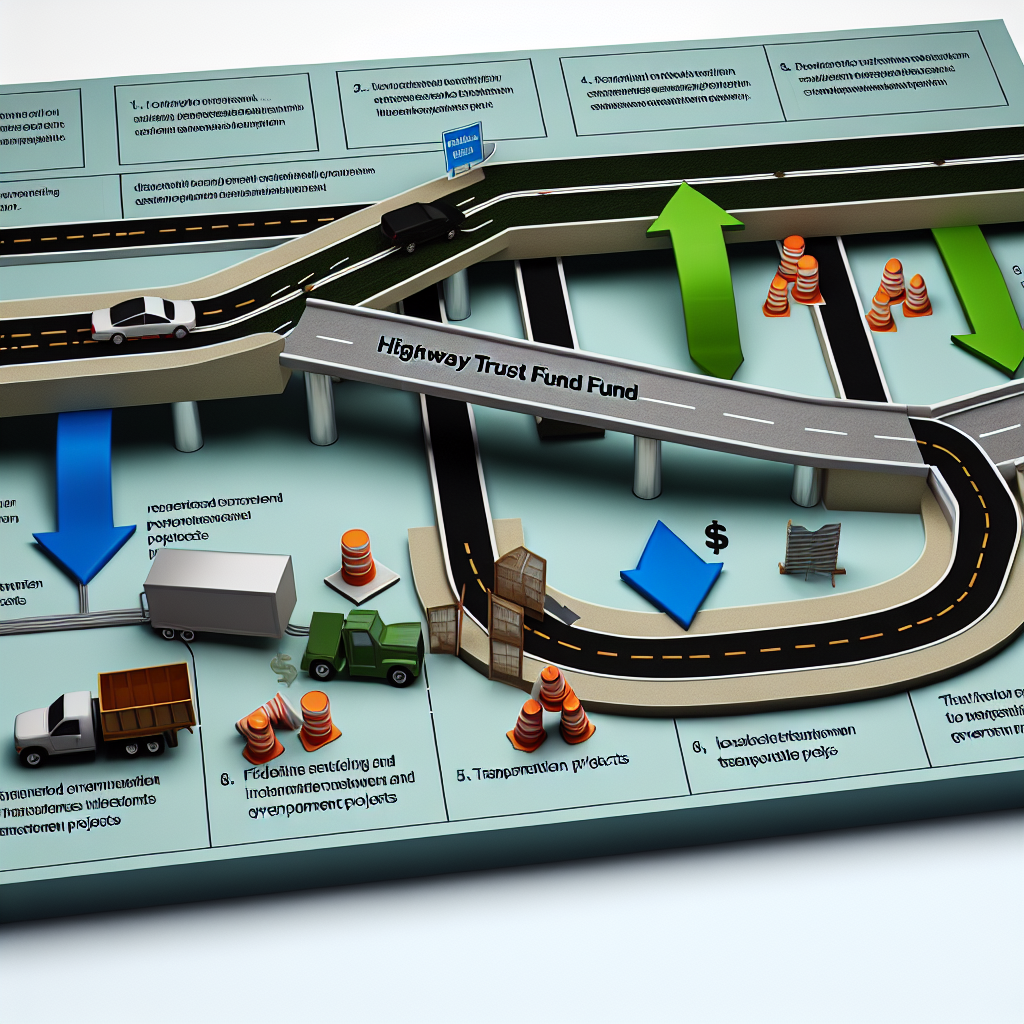As the clock ticked past October 1, 2023, a significant ripple effect was felt across the nation due to the U.S. government shutdown, which left nearly 750,000 federal employees in a state of uncertainty. Among those in the crosshairs of this stalemate are key agencies responsible for ensuring the safe and efficient operation of the trucking industry, including the Federal Motor Carrier Safety Administration (FMCSA) and the Federal Highway Administration (FHWA), both of which have kept their critical oversight functions intact. Remarkably, over 4,000 employees across these agencies remained unaffected by furloughs, ensuring that essential trucking oversight continued without interruption.
This situation reveals the stark importance of regulatory frameworks that govern trucking, especially during challenging times when federal operations are at risk of being disrupted. In this article, we will delve into how trucking oversight remains resilient in the face of government challenges and explore the implications this has for safety and compliance in the logistics sector.

FMCSA Operations During the Government Shutdown
Despite the challenges posed by the U.S. government shutdown that began on October 1, 2023, the Federal Motor Carrier Safety Administration (FMCSA) effectively continued its operations. Thanks to its funding mechanisms, primarily reliant on the Highway Trust Fund, FMCSA was able to keep all 1,084 employees actively engaged in their critical oversight roles.
The FMCSA’s commitment to safety and compliance standards in trucking was unwavering during this period. Employees remained on duty, ensuring that vital functions such as compliance checks and safety enforcement were conducted without interruption. This included overseeing roadside inspections and ensuring that trucking companies adhered to federal safety regulations.
In a statement, the U.S. Department of Transportation emphasized, “All operations continue as normal.” This statement underscores FMCSA’s dedication to maintaining operations, serving as a reassurance amidst uncertainty.
Specifically, FMCSA personnel played crucial roles in:
- Compliance Checks: Regular inspections of trucking companies to ensure adherence to safety and regulatory standards were conducted. This proactive measure is vital for maintaining safety on the roads.
- Safety Enforcement: FMCSA staff enforced safety regulations, addressing any violations promptly to mitigate risks on highways.
- Regulatory Oversight: Continued management of existing regulations to ensure the trucking industry operated smoothly, despite potential disruptions caused by the shutdown.
While certain administrative processes, such as new regulatory initiatives, faced delays during the shutdown, fundamental safety functions were preserved. This ability to maintain oversight underscores the resilience and importance of the FMCSA’s operational framework in sustaining trucking safety during challenging times. The agency’s swift actions and well-structured funding not only ensured operational continuity but also reinforced the crucial safety standards that govern the trucking industry.
User Adoption of Highway Safety Measures
User adoption rates of FMCSA highway safety measures, introduced after the COVID-19 shutdown, show a complex landscape influenced by the pandemic. The FMCSA implemented various regulations to enhance trucking safety, but measuring their adoption and effectiveness has been difficult.
A key change was the adjustment of Hours of Service (HOS) regulations, which aimed to provide truck drivers with more flexibility. These changes included updates to the short-haul exception. However, a report to Congress in May 2023 noted an increase in HOS violations, rising from 7.6% to 8.5%. The crash and fatality rates remained stable during this time, indicating that the impact of these changes on safety is still unclear. The effects of COVID-19 on the trucking industry made it hard to assess these adaptations properly.
Enforcement actions dropped sharply during the pandemic, falling nearly 60% at its onset. This sharp decline highlighted challenges in maintaining oversight during this unprecedented time. As restrictions eased, on-site audits surged, with a 54% increase by 2022 compared to previous years. This reflected a renewed commitment to oversight and compliance.
Additionally, the FMCSA has focused on simplifying regulations, repealing or modifying rules deemed unnecessary. For example, allowing electronic submissions for inspections has reduced burdens on drivers.
In summary, while the FMCSA has made progress in implementing safety measures, challenges in accurately measuring adoption rates and effectiveness persist due to disruptions in data collection caused by the pandemic.
| Agency | Non-Furloughed Employees |
|---|---|
| Federal Motor Carrier Safety Administration (FMCSA) | 1,084 |
| Federal Highway Administration (FHWA) | 2,268 |
| National Highway Traffic Safety Administration (NHTSA) | 574 |
| Other Agencies | Varies |
Funding for Infrastructure Projects During the Government Shutdown
The ongoing U.S. government shutdown has raised significant concerns regarding funding for highway infrastructure projects. Fortunately, the Highway Trust Fund (HTF) has proven instrumental in maintaining funding availability for these projects, allowing many federal highway and transit programs to continue functioning without disruption during such political impasses. This fund is primarily financed through dedicated revenue sources, particularly federal fuel taxes, ensuring a stable revenue stream essential for funding vital infrastructure initiatives.
During the current shutdown, agencies like the Federal Highway Administration (FHWA) remain operational, committing resources to critical infrastructure projects. Notably, the FHWA has continued to process project reimbursements to state transportation departments and transit agencies, effectively keeping various projects on track. In fact, it’s reported that despite the shutdown, the FHWA and the Federal Transit Administration (FTA) are actively pursuing their responsibilities, with personnel engaged and funds for ongoing projects flowing as planned.
However, challenges arise for infrastructure projects that depend on discretionary appropriations from the U.S. General Fund. Specific funding has been frozen during this period; for example, $2.1 billion allocated for major transit projects in Chicago and $18 billion earmarked for New York’s Hudson Tunnel and Second Avenue Subway were withheld recently due to administrative concerns regarding equity practices and contracting methods [Reuters], [Reuters]. This suspension of funds illustrates the unique pressures that discretionary spending faces during government shutdowns.
Despite the functionality of current systems, the HTF is not without long-term financial concerns. The Congressional Budget Office has projected that, without timely legislative action, the HTF could face insolvency by 2028, incurring a cumulative shortfall exceeding $135 billion by 2031 [Naco]. This looming financial threat signifies that while ongoing projects may sustain during short-term shutdowns, the long-term capacity to support future infrastructure needs hangs in a delicate balance.
In summary, the HTF’s workings allow for most highway infrastructure projects to proceed during the current government shutdown; however, those reliant on discretionary appropriations are notably at risk of funding delays. Ensuring the future viability of the HTF and establishing a more sustainable funding mechanism will be essential to preserving the nation’s commitment to infrastructure development.

Conclusion
The resilience of trucking oversight during the recent U.S. government shutdown has demonstrated the critical importance of maintaining robust regulatory frameworks, especially in times of uncertainty. Despite the shutdown’s potential to disrupt operations, agencies such as the Federal Motor Carrier Safety Administration (FMCSA) and the Federal Highway Administration (FHWA) remained steadfast, with over 4,000 employees crucially supporting their missions without interruption. The remarkable commitment of these employees ensured that vital oversight functions continued, safeguarding the safety and efficiency of the trucking industry.
Key actions included maintaining compliance checks, enforcing safety regulations, and managing existing standards, which were essential to prevent lapses during a period when many federal operations were at risk. The ability of FMCSA and other agencies to work effectively amid government disruptions reinforces the idea that consistent oversight is paramount for the trucking sector’s health and reliability.
Looking forward, it is essential to recognize the ongoing need for effective and adaptive accountability measures within the industry. The lessons learned from this shutdown highlight the necessity of sustained oversight as a foundation for future operational success and safety enhancements. As the trucking industry continues to evolve, it is crucial to ensure that regulatory agencies remain vigilant and equipped to address the challenges ahead, thereby fortifying the systems that ensure our highways remain safe for all users.
Related Articles and Resources
For readers interested in further exploration of trucking oversight, FMCSA operations, and the implications of government shutdowns on the industry, there are several valuable resources available:
- FMCSA Regulations in 2025: What Trucking Businesses Need to Know Under the New Administration – This article outlines key FMCSA regulatory updates for 2025, including new compliance requirements.
- FMCSA operations ‘continue as normal’ during shutdown (Published on October 2, 2025) – Coverage of how FMCSA employees are maintaining operations amidst the federal government shutdown.
- FMCSA Proposes New Rule Changes for the Trucking Industry (Published on May 27, 2025) – Details of proposed regulatory changes aimed at clarifying existing FMCSA rules and reducing paperwork.
- Trucking oversight mostly unaffected despite U.S. government shutdown (Published on October 3, 2025) – An article discussing how FMCSA and other agencies continue operational oversight.
- How the U.S. Government Shutdown Is Disrupting Logistics – A discussion of the broader impacts of the government shutdown on logistics, including customs processing delays.
Implications of the Shutdown on Trucking Safety
The effects of the recent U.S. government shutdown on trucking safety extend beyond immediate disruptions, delving into regulatory delays, enforcement challenges, and complications regarding safety initiatives within the industry. While core enforcement activities operated largely uninterrupted, the ramifications of the shutdown are noteworthy and require nuanced understanding.
Regulatory Delays
During government shutdowns, agencies like the Environmental Protection Agency (EPA) can account for a significant portion of furloughed employees, which may delay vehicle certifications required under the Clean Air Act. The consequences ripple through production schedules, potentially delaying the rollout of new vehicles and impacting fleet operations and safety standards. These delays can create gaps in safety compliance as older vehicles may continue to operate beyond their optimal safety parameters, impacting overall roadway safety.
Enforcement Challenges
The Federal Motor Carrier Safety Administration (FMCSA) usually maintains its core enforcement activities during government shutdowns, largely due to its funding structure through the Highway Trust Fund. However, general fund appropriations, responsible for administrative tasks and certain regulatory initiatives, may be stalled during such periods. This can impede the processing of new carrier registrations, medical waivers, and critical safety reviews. Although safety checks like roadside inspections persist, the broader regulatory landscape may see delays that ultimately affect compliance rates and oversight.
Furthermore, the Occupational Safety and Health Administration (OSHA) tends to furlough a considerable percentage of its workforce during government shutdowns, halting standard inspections and enforcement processes. The decrease in regulatory oversight can raise valid concerns about safety compliance in workplaces across the trucking sector, where workers depend on stringent safety measures to protect against potential hazards.
Effects on Safety Initiatives
Prolonged periods of government shutdown can disrupt essential safety initiatives, leading to a backlog that compromises regulatory actions and outcomes. Previous shutdowns have demonstrated that slowdowns in FMCSA’s enforcement actions can increase safety risks, contributing to negative trends on the roads. Without timely review and enforcement of impactful regulations, the trucking industry may face heightened operational risks that encapsulate not just drivers but everyone sharing the road.
In addition, shutdowns can adversely affect logistics, yielding delays in customs clearance and other regulatory approvals critical for cross-border trade. These bottlenecks result in prolonged wait times for trucks, elevating operational costs and instilling inefficiencies throughout the supply chain. Such disruptions invariably influence the safety standards and practices upheld within the trucking industry, as prolonged downtime can lead to stress and fatigue among drivers tasked with navigating tighter schedules after delays.
In summary, government shutdowns present distinct challenges that manifest through regulatory delays, enforcement challenges, and interruptions to safety initiatives. Though immediate safety checks might continue, the underlying infrastructure that sustains these safety standards can falter under such political impasses, thereby impacting overall trucking safety.
FMCSA Operations During the Government Shutdown
Despite the challenges posed by the U.S. government shutdown that began on October 1, 2023, the Federal Motor Carrier Safety Administration (FMCSA) effectively continued its operations. Thanks to its funding mechanisms, primarily reliant on the Highway Trust Fund, FMCSA was able to keep all 1,084 employees actively engaged in their critical oversight roles.
The FMCSA’s commitment to safety and compliance standards in trucking was unwavering during this period. Employees remained on duty, ensuring that vital functions such as compliance checks and safety enforcement were conducted without interruption. This included overseeing roadside inspections and ensuring that trucking companies adhered to federal safety regulations.
In a statement, the U.S. Department of Transportation emphasized, “All operations continue as normal.” This statement underscores FMCSA’s dedication to maintaining operations, serving as a reassurance amidst uncertainty.
Specifically, FMCSA personnel played crucial roles in:
- Compliance Checks: Regular inspections of trucking companies to ensure adherence to safety and regulatory standards were conducted. This proactive measure is vital for maintaining safety on the roads.
- Safety Enforcement: FMCSA staff enforced safety regulations, addressing any violations promptly to mitigate risks on highways.
- Regulatory Oversight: Continued management of existing regulations to ensure the trucking industry operated smoothly, despite potential disruptions caused by the shutdown.
While certain administrative processes, such as new regulatory initiatives, faced delays during the shutdown, fundamental safety functions were preserved. This ability to maintain oversight underscores the resilience and importance of the FMCSA’s operational framework in sustaining trucking safety during challenging times. The agency’s swift actions and well-structured funding not only ensured operational continuity but also reinforced the crucial safety standards that govern the trucking industry.
During the 2025 U.S. government shutdown, the trucking industry faced unique challenges, yet many drivers and officials underscored the critical role of trucking oversight and safety measures.
Tony Justice, a truck driver and country singer, emphasized the unwavering commitment of truckers during crises:
“Truckers don’t shut down when our fellow Americans need us the most. THEY STAND UP and get the job done to make sure all those families impacted by a natural disaster have what they need to survive and rebuild.” (cdllife.com)
Despite the shutdown, the Federal Motor Carrier Safety Administration (FMCSA) maintained its operations, ensuring that safety regulations remained enforced. The Department of Transportation stated:
“All operations continue as normal with a lapse in annual appropriations, subject to the amount of liquidating cash the Agency has available.” (truckpartsandservice.com)
This continuity highlighted the importance of sustained oversight in the trucking industry, even during governmental disruptions.
Furthermore, the FMCSA’s commitment to safety was evident when it shut down an Indiana trucking firm for allowing drivers to falsify logbooks, violating hours-of-service regulations. The agency emphasized:
“Our number one job is to save lives by reducing the risk of fatalities and injuries involving large trucks.” (fmcsa.dot.gov)
These instances underscore the dedication of truck drivers and officials to uphold safety standards and the essential nature of trucking oversight, especially during challenging times.
User Adoption of Highway Safety Measures
User adoption rates of FMCSA highway safety measures, introduced after the COVID-19 shutdown, show a complex landscape influenced by the pandemic. The FMCSA implemented various regulations to enhance trucking safety, but measuring their adoption and effectiveness has been difficult.
A key change was the adjustment of Hours of Service (HOS) regulations, which aimed to provide truck drivers with more flexibility. These changes included updates to the short-haul exception. However, a report to Congress in May 2023 noted an increase in HOS violations, rising from 7.6% to 8.5%. The crash and fatality rates remained stable during this time, indicating that the impact of these changes on safety is still unclear. The effects of COVID-19 on the trucking industry made it hard to assess these adaptations properly.
Enforcement actions dropped sharply during the pandemic, falling nearly 60% at its onset. This sharp decline highlighted challenges in maintaining oversight during this unprecedented time. As restrictions eased, on-site audits surged, with a 54% increase by 2022 compared to previous years. This reflected a renewed commitment to oversight and compliance.
Additionally, the FMCSA has focused on simplifying regulations, repealing or modifying rules deemed unnecessary. For example, allowing electronic submissions for inspections has reduced burdens on drivers.
In summary, while the FMCSA has made progress in implementing safety measures, challenges in accurately measuring adoption rates and effectiveness persist due to disruptions in data collection caused by the pandemic.
